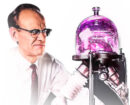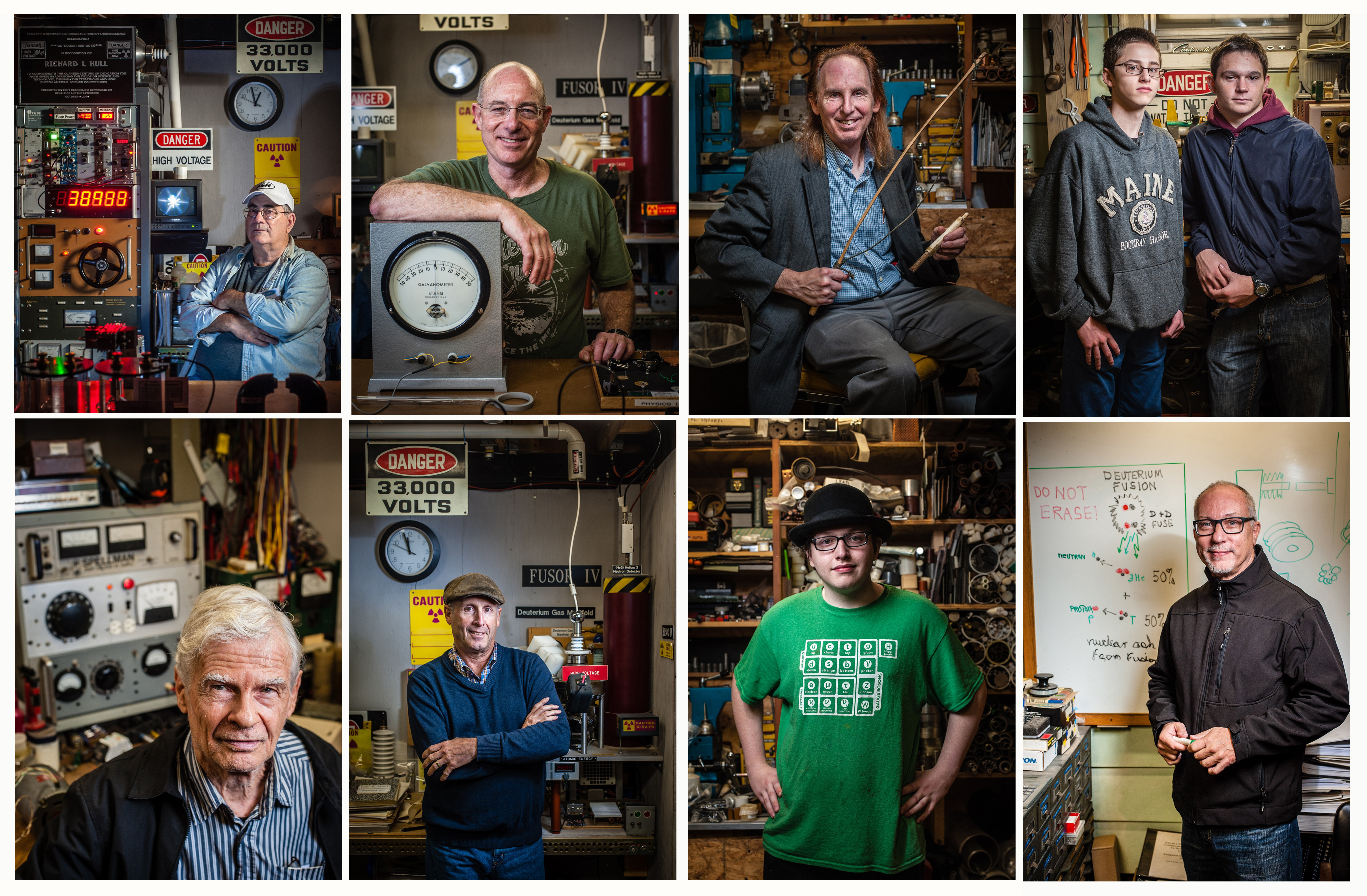OK, maybe “news” is stretching it a bit, since this story has been in the works since October. But it does appear in the Washington Post, which legend has it is still a ‘news’paper…
The image atop this post is a composite of 8 portraits that were photographed at Richard Hull’s 2015 High Energy Amateur Science (HEAS) gathering at his home and lab in Richmond, VA back in October.
Most of that Saturday, we enjoyed the company of Washington Post correspondent Cathy Alter and photographer Andre Chung. I forget now how Cathy had gotten wind of the fusor crew, but she was intrigued enough to get some background on the subject and came prepared for an event that was – to put it mildly – somewhat foreign to her experience.
The result is this story that appears in the Sunday, May 29 Washington Post Magazine section:
The Fusioneers: Forget cars, these guys build nuclear reactors in their back yards.
…which offers an interesting perspective on how a lay-person responds when confronted with the fact of “amateur” scientists fooling around with nuclear reactors in their basements and garages.
Starting with a look at Richard Hull’s Fusor IV, Cathy writes:
I’m nervously checking out the 69-year-old Hull’s fusor, rubbernecking with 43 others, including a handful of high school students accompanied by game-but-baffled parents. We are gathered for the annual meeting of HEAS, which stands for the High Energy Amateur Science group and meets in this shed every year on the first Saturday of October for a day of, in Hull’s words, “anything that has to do with bangs, pops and sizzles.”
… I was captivated, bewildered and, frankly, a little afraid. As we filed out of Hull’s door at day’s end, a man in front of me turned around and said: “Just a tip. Be sure to wash your hands before you eat.”
And so it goes.
What follows are short profiles of Richard and eight of the other attendees at the HEAS gathering (pictured, above, clockwise from the top left: Richard Hull, Tim Raney, Kevin Dunn, Scott Moroch & Jack Rosky, Larry Adams, Connor Givans, Paul Schatzkin, Frank Sanns).
What is perhaps more interesting to read are the comments that follow the online version of the article, which offers a pretty good indication of what is the public’s perception of nuclear energy, fusion, and the fusor in particular.
It seems that as difficult as it may be to achieve net-power from fusion, it may be even harder to persuade a doubting populace that we really need it.

